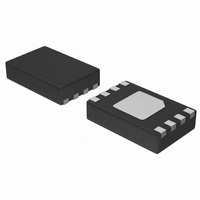CAT5126VP2I10GT3 ON Semiconductor, CAT5126VP2I10GT3 Datasheet - Page 5

CAT5126VP2I10GT3
Manufacturer Part Number
CAT5126VP2I10GT3
Description
IC POT DPP OTP 32TAP U/D 8-TDFN
Manufacturer
ON Semiconductor
Datasheet
1.CAT5126ZI-10-GT3.pdf
(9 pages)
Specifications of CAT5126VP2I10GT3
Taps
32
Resistance (ohms)
50K
Number Of Circuits
1
Temperature Coefficient
50 ppm/°C Typical
Memory Type
Non-Volatile
Interface
I²C, 2-Wire Serial
Voltage - Supply
2.5 V ~ 5.5 V
Operating Temperature
-40°C ~ 85°C
Mounting Type
Surface Mount
Package / Case
8-VFDFN Exposed Pad
Resistance In Ohms
50K
Number Of Pots
Single
Taps Per Pot
32
Resistance
10 KOhms
Wiper Memory
Non Volatile
Digital Interface
Serial (2-Wire, I2C)
Operating Supply Voltage
5 V
Supply Current
5 uA
Maximum Operating Temperature
+ 85 C
Minimum Operating Temperature
- 40 C
Mounting Style
SMD/SMT
Supply Voltage (max)
5.5 V
Supply Voltage (min)
2.5 V
Lead Free Status / RoHS Status
Lead free / RoHS Compliant
Available stocks
Company
Part Number
Manufacturer
Quantity
Price
Company:
Part Number:
CAT5126VP2I10GT3
Manufacturer:
ON Semiconductor
Quantity:
2 150
Detailed Description
(end−to−end resistance) digitally controlled potentiometers.
They have 32−tap positions that are accessible to the wiper
along the resistor array between R
the tap positions using a simple I
potentiometers have an optional one−time programmable
feature that sets the POR position of the wiper. The I
interface can then be disabled, permanently preventing
unwanted adjustment.
Digital Interface Operation
the serial interface is active: increment mode and decrement
mode. The serial interface is only active when CS is low.
along the resistor array. When CS transitions from high to
low, the part goes into increment mode if U/D is high
(Figure 6), and into decrement mode if U/D is low
(Figure 7). Once the mode is set, the device remains in that
mode until CS goes high. A low−to−high transition at the
U/D increments or decrements the wiper position depending
on the current mode.
The
The wiper (R
The CAT5126 devices have two modes of operation when
The CS and U/D inputs control the position of the wiper
V
V
U/D
U/D
CAT5126
V
V
CS
CS
DD
DD
W
W
W
) position is adjusted sequentially through
devices
Figure 7. Decrement Mode Serial Interface Timing Diagram
Figure 6. Increment Mode Serial Interface Timing Diagram
t
t
are 10 kW/50 kW/100 kW
CU
CU
2
t
t
UP
UP
C interface. These digital
H
and R
L
.
t
t
CI
CI
http://onsemi.com
2
C
t
t
t
IH
IL
IW
5
position is maintained till the device is Powered down.
ensuring that there is never an open circuit during a
transition from one resistor tap to another. When the wiper
is at either end (max/min) of the resistor array, additional
transitions in the direction of the endpoint do not change the
counter value (the counter does not wrap around).
One−Time Programming
is tap 16. However, the power−up position can be changed
once using the one−time programming feature. After the
wiper is moved to the desired position, the programming
sequence is initiated by setting U/D high, applying 10 V to
V
of CS starting from low and going high for t
for t
voltage should then be taken to zero. After the device is
programmed, V
The wiper position is still adjustable, but always returns to
this programmed position on power−up.
PP
The value of the counter is then stored and the wiper
The wiper performs a make−before−break transition,
The factory−set default position of the wiper on power−up
, and then taking CS low. Five pulses on CS (consisting
CL
) program the device (Figure 8). The programming
t
t
t
IL
IH
IW
PP
can be set to zero or be allowed to float.
t
IC
t
IC
CH
and then low









